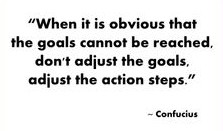A new beginning

At the start of a new year, many of us want to make a change. Can we change a bad habit into a good habit? Can we make our diet more healthy? Can we start that exercise program we let slip? Can we start meditating or journal writing regularly?
At the start of a new year, we make resolutions. We will volunteer with a local non-profit. We will be active in a political campaign to get our favorite people elected to office. We will engage with our neighbors and become more a part of our community. We want to change our habits and improve our relationships and have a larger impact on the world around us. There is so much to do!
In business, the beginning of the year is a great time for long-term planning – which essentially means planning for growth or positive change. Our planning process may entail making or modifying a to-do list with key tasks and timelines or creating financial projections. For most of us who run very small businesses, the best thing we can do is sit down (either alone or with a trusted support person) and decide on one specific goal or outcome that we would like to reach by year end. We can then make monthly commitments to get there. We will then be just 12 steps away from a completely different place!
That is the crux of taking action. Create attainable goals, outline the steps that are needed to get there (with realistic deadlines), and hold yourself accountable to the plan.
This planning process is essential when you want to make a big management transition, such as adjusting the ownership structure of your business, adding partners/investors or improving management systems. Whatever the transition, it definitely needs to include creating a realistic plan to reach your goal.
As we move into the year, let’s resolve to make a plan and let’s be sure to hold onto the beginner’s mind. That’s the mind full of possibilities. Setting a goal and a particular path does not mean you have to close yourself off to other directions. Keep your eyes open, connect with others, test your assumptions, learn and be influenced. Here’s to a year of change!
“In the beginner’s mind there are many possibilities…”
– Zen teacher Shunryu Suzuki,







